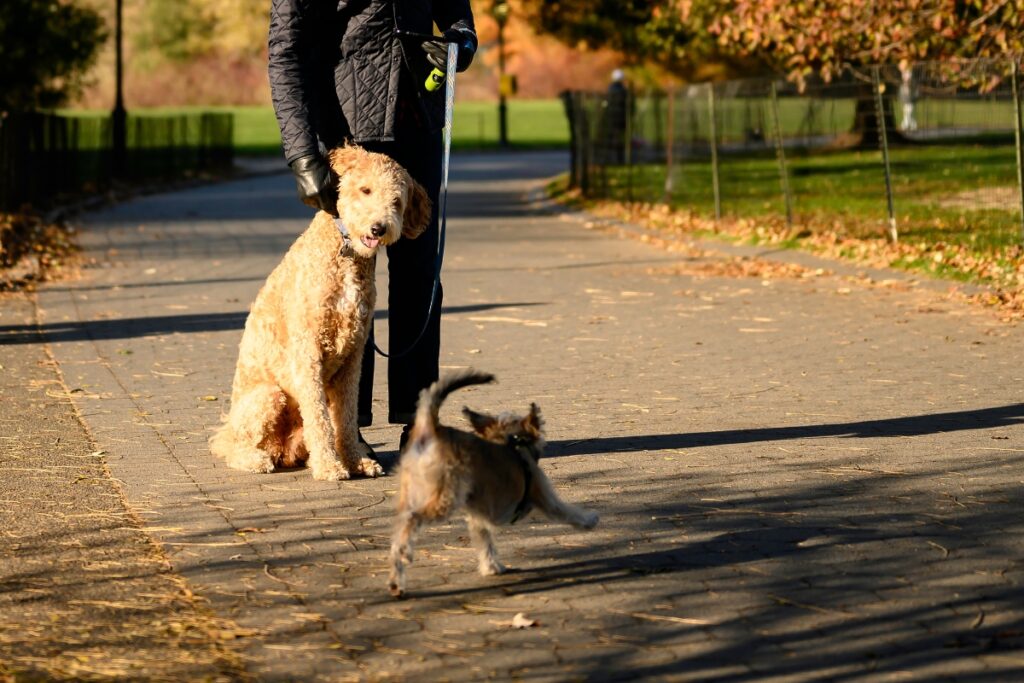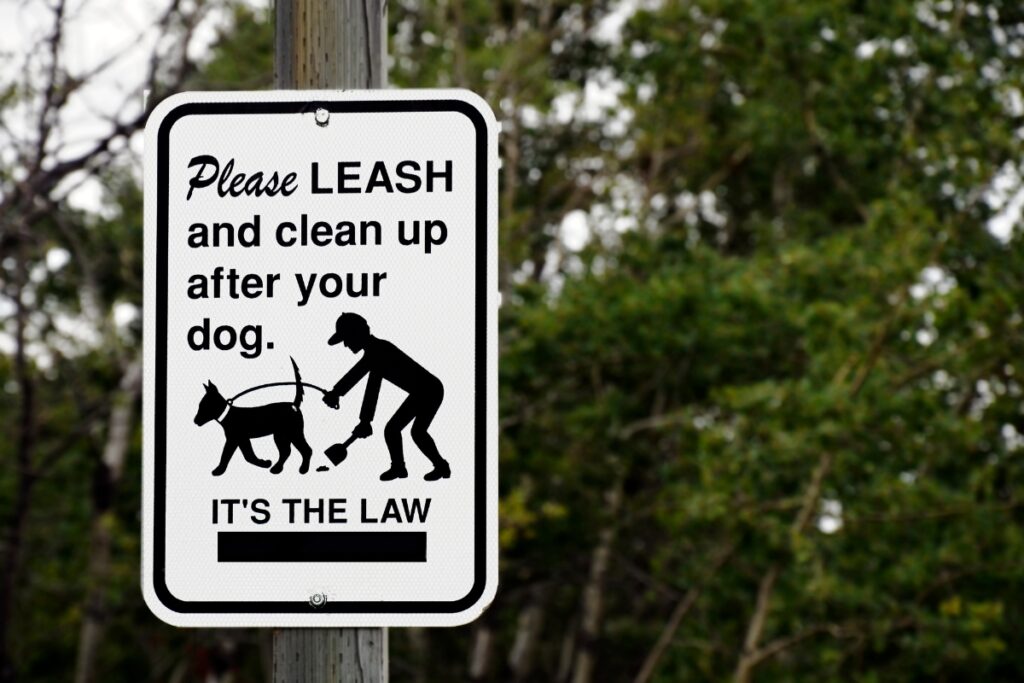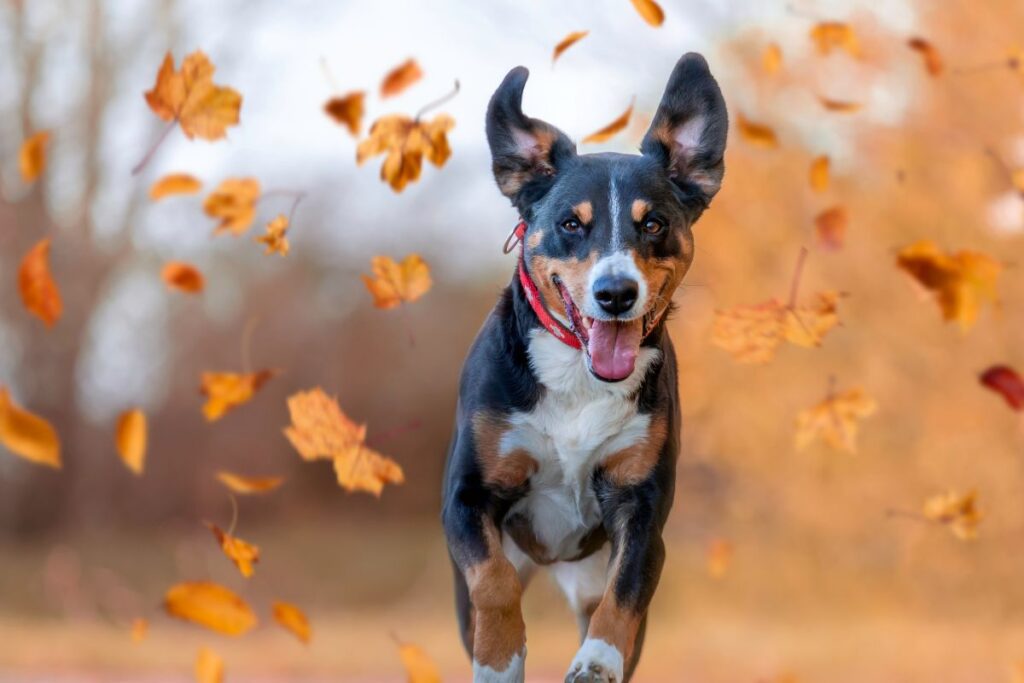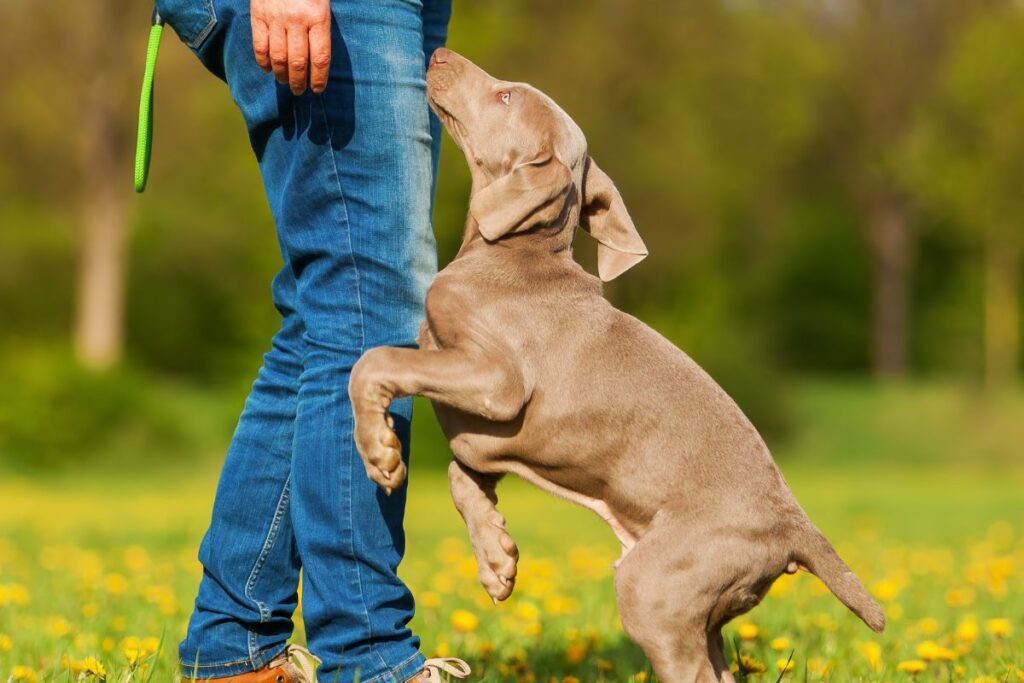
Encountering an off-leash dog while out on a walk can be unnerving. Some people simply prefer to avoid dogs, while others may be walking with young children, managing a reactive or anxious pet, or working to carefully socialize a puppy. Regardless of your situation, knowing how to respond calmly and effectively can make a big difference. Here are a few tips on what to do—and what to avoid—to help everyone stay safe.
1. DO: Stand Still Like a Tree

If a loose dog approaches, avoid moving toward or away from it suddenly. Instead, stand as still as possible, with your body slightly turned to the side, hands at your sides, and eyes averted. This “tree pose” can signal that you aren’t a threat and may stop the dog from advancing. If you’re with children, teach them to do the same to avoid triggering the dog’s curiosity or excitement.
2. DON’T: Run or Move Quickly

While it may feel instinctual to run, especially if the dog looks aggressive, resist this urge. Running can trigger a dog’s natural prey drive, which could make them chase you, even if they’re just playing. If you’re with your pet or child, calmly remind them to avoid sudden movements. Moving slowly or standing still shows the dog there’s nothing exciting or worth chasing. This approach can be especially helpful if your pet tends to react strongly to other animals.
3. DO: Speak in a Calm, Firm Tone

If the dog is uncertain but within earshot, try calmly speaking to it in a neutral tone. Using simple commands like “Stay” or “Sit” in a steady voice can sometimes redirect the dog’s attention without scaring it. This is particularly useful if you have a reactive pet or a young child with you, as your calm tone can set the mood and help everyone stay composed. A steady voice shows control, which can reduce the tension.
4. DON’T: Wave Your Arms or Yell

Raising your arms or shouting can make a loose dog more excited, frightened, or even defensive. These sudden, loud actions can escalate a dog’s arousal level and might provoke aggression, especially in nervous dogs. If you’re with kids, remind them to keep their hands low and avoid any loud exclamations. Instead, focus on remaining as steady and unthreatening as possible to keep the situation under control.
5. DO: Carry High-Value Treats

Bringing treats on walks can be a lifesaver when dealing with unexpected encounters. If a dog approaches and seems friendly but overly curious, toss a few treats on the ground away from you. This can redirect their focus and give you a chance to create space. This technique is helpful when walking a sensitive or reactive dog who might feel uncomfortable with an approaching animal. For those training a puppy, it’s also a way to demonstrate calmness in unfamiliar situations, making each walk a learning opportunity.
6. DON’T: Grab for the Dog’s Collar

Avoid trying to grab the off-leash dog by the collar or any part of their body. Sudden physical contact from a stranger may startle or provoke a fearful or territorial reaction, especially if the dog is nervous. This tip is very important for people with kids, as they may instinctively reach out to “help.” Maintain a safe distance and focus on calmly guiding everyone out of the area, reminding little ones to keep their hands to themselves.
7. DO: Bring a Safe Deterrent

A deterrent like a citronella spray or a pop-up umbrella can provide added protection in case an approaching dog shows signs of aggression. The smell of citronella deters many dogs but is harmless, while an umbrella can create a quick barrier that blocks the dog’s line of sight, giving you a moment to move away. These items offer a non-confrontational way to keep a curious or assertive dog at bay.
8. DON’T: Pick Up Small Dogs

If you’re walking a small dog or a puppy, avoid picking them up when an off-leash dog comes closer. This can activate a dog’s chase or prey instincts, increasing their interest. For small dog owners, it’s often safer to step between your pet and the approaching dog, maintaining calm control. If you’re with small children, consider picking them up instead, while using a confident but non-threatening voice to redirect the dog’s attention away from your group.
9. DO: Plan Alternate Routes

Knowing your neighborhood can help you avoid areas where loose dogs are more common. If you see a dog off-leash in the distance, consider calmly changing direction or crossing the street to create distance. Barriers like cars or trees can help further reduce the chance of a direct encounter. This approach is invaluable if you’re socializing a puppy or walking a reactive dog, as it allows for safe, gradual exposure to new environments without unnecessary stress.
10. DON’T: Make Direct Eye Contact

Staring directly at a dog, especially one that seems uncertain or tense, can come across as a challenge. Instead, keep them in your peripheral vision while turning your body slightly away to convey that you’re not a threat. This is a helpful technique for anyone nervous around dogs, as it communicates calmness and neutrality. Keeping your stance relaxed can prevent the dog from perceiving you or your group as confrontational, helping to defuse the situation.
11. DO: Be Aware of Your Surroundings

Stay vigilant during walks and scan the environment for any off-leash dogs. Early detection gives you time to assess the situation and choose the best course of action, such as changing direction or creating distance. Always be mindful of blind corners, dense bushes, and open gates where a loose dog might appear suddenly.
12. DO: Walk Away Calmly

If you spot an off-leash dog approaching, avoid panicking and calmly change direction. Keep a relaxed grip on your dog’s leash to avoid signaling tension, as your dog will pick up on your cues. Walking away without running reduces the chance of triggering the other dog’s prey drive. Ensure your dog is trained to follow your lead in such situations through obedience practice.
13. DO: Use a Body Block

Position yourself between your dog and the approaching one by stepping into their path. Face the loose dog directly and extend your hand while firmly saying commands like “No!” or “Go home!” This assertive posture can deter many dogs. Keep your body aligned to create a barrier while gradually leading your dog away. This tactic works best if you remain calm and confident.
14. DO: Use Unconventional Exit Strategies

Use nearby objects or structures for protection, especially if you have a small dog. One dog owner placed her small terrier in a trash can on the curb to shield him from a loose dog. Look for safe, creative solutions in your environment to protect your pet when conventional methods aren’t available.
15. DO: Carry a Walking Stick

Bring a walking stick, golf club, or similar object during walks to use as a deterrent. If an off-leash dog approaches aggressively, brandish the stick without making contact. The noise of tapping it on the ground or swinging it through the air can often intimidate the dog. This tactic is meant to create a boundary without causing harm, ensuring both dogs remain safe.
Stay connected with us for more stories like this! Follow us to get the latest updates or hit the Follow button at the top of this article, and let us know what you think by leaving your feedback below. We’d love to hear from you!







